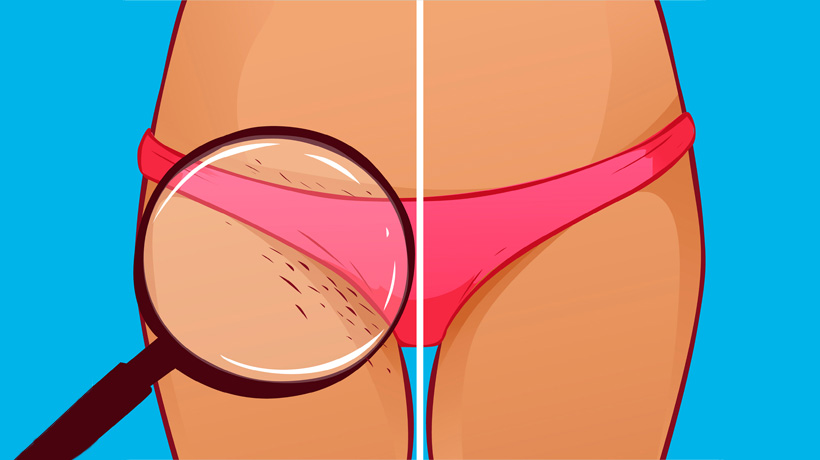Ingrown hairs are the dermal equivalent of friends who severely overstay their welcome at your apartment. They just don’t want to leave and tend to inflame you with their persistence.
If you want to know how to gently boot these pesky companions out of your space, read on!
What are ingrown hairs?
When you perform any kind of hair removal, you run the risk of developing ingrown hairs. These pus-filled papules form when hair grows back underneath (instead of through the skin) and your body defends itself against what it believes to be a foreign invader by inflaming your skin.
Stop all hair removal!
To truly eliminate ingrowns, you need to stop shaving, waxing, and/or using hair removal creams until there is a noticeable improvement in your skin. Running a razor or applying a hot, sticky substance to still-inflamed areas will only worsen the irritation and potentially cause infection.
Apply a warm compress
The first thing you should do when you discover an ingrown is apply a warm compress to the area. Soak a soft washcloth in warm (not hot!) water and press it onto your skin for 10 to 15 minutes. Use gentle, circular motions for ten seconds at a time to exfoliate. You can increase or lessen this time based on how sensitive your skin is.
Once your pores have opened up, take some clean, sharp tweezers and begin pulling out only the hairs that you can see sticking out of your skin. Leave the others alone. You’ll notice that the swelling and redness subside pretty soon after removal.
Use an exfoliating oil
Once you have manually taken out some of these unruly specimens, use a topical exfoliating and/or anti-bacterial oil to prevent future irritation. I like to use a serum from the European Wax Center, but you can try alternatives with ingredients such as benzoyl peroxide, witch hazel, or tea tree oil.
Prevention
To avoid locking your hair in that dungeon of inflammation and throwing away the key, make sure you adhere to the following hair-removal practices.
Shave hygienically
Always exfoliate and wet your skin before shaving, as these steps will eliminate dead skin and soften hair to make removal easier.
Change your blades after six uses at most, and try single-blade razors as these decrease the risk of your hair getting caught beneath your skin (particularly in your pubic area, since these hairs tend to be curly).
Moisturize
Once you get out of the shower, you want to keep your skin supple and less prone to irritation. Moisturizing will prevent the buildup of dead skin above the hair follicle.
Consider laser hair removal
Though pricey, this procedure will permanently damage the follicles from which your ingrown and regular hairs grow, thus preventing this problem in the future almost entirely.
Sources:
https://www.healthline.com/health/treating-preventing-ingrown-vaginal-hair#when-to-see-your-doctor
https://www.healthline.com/health/treating-preventing-ingrown-vaginal-hair#treatment-for-infection
https://www.ouishave.com/blogs/news/epic-guide-treat-and-prevent-ingrown-hairs



